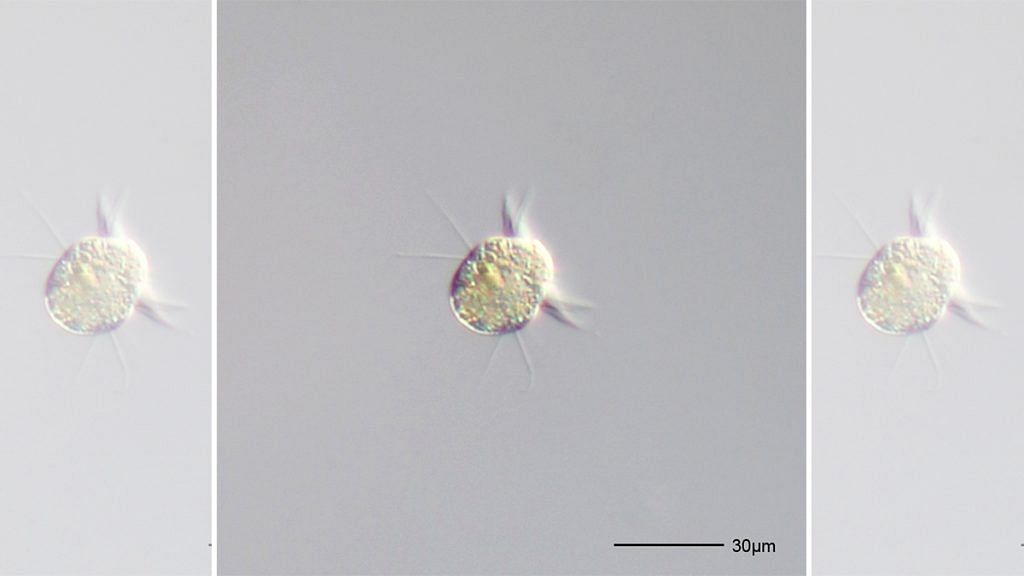Bengaluru: Viruses, often thought to be predators that feed and kill their hosts, are nutrition for another group of microscopic, often unicellular organisms, called protists. Scientists have now identified an actual species of protist that feasts on viruses — Halteria, a ciliate that was observed consuming viruses in samples of pond water.
To find out what microorganisms consume viruses, microbiologists from the University of Nebraska-Lincoln in the USA obtained samples of water from ponds and studied them in a lab. Their peer-reviewed findings were published in a study in the journal Proceedings of the National Academy of Sciences (PNAS) in December last year.
The laboratory experiments showed that these organisms can sustain themselves with viruses, consuming many and growing in size. How much these protists affect food chains and natural ecosystems by putting evolutionary pressure on viruses is yet to be investigated.
It was only two years ago that scientists found viral genes in the genomes of marine protists, indicating that protists likely ingested viral matter. But direct consumption was not observed, until now.
These virus-eating species of protists — which are their own kingdom on the tree of life and are not an animal, plant, or fungi — are now classified as virovores.
Given that viruses as a part of larger matter ingested by other organisms make up very small mass and caloric intake, they were thought to be unimportant as a food or a source of nutrients for these organisms. But the new findings change our understanding of the role viruses play in the food chain at a microscopic level.
Also Read: New science frontiers in 2022: Dead organs come to life & a eureka moment for nuclear fusion
Halteria consumed 10,000-10,00,000 viruses per day
Microbiologists noticed that both ciliate protists Halteria and Paramecium bursaria grew in quantity and multiplied while the quantity of viruses in the sample decreased, compared to control samples that were cleared of the virus.
To confirm their theory that the organisms were feeding on viruses (more accurately, virions), the team stained the DNA of chloroviruses with a fluorescent dye and allowed protists like Paramecium caudatum and Euplotes to “graze” on the viruses, along with Halteria.
They found that Halteria consumed 10,000 to 10,00,000 viruses per day, growing in size. The new Halteria cells also glowed, indicating that the dye in the virus particles had been ingested.
Overall, with no other food sources, Halteria population increased by about 15 times in two days, while the level of chlorovirus which was used in the experiment dropped by 100 times. In control samples without the virus, Halteria did not grow.
The experiments show that Halteria is the first known virovore, and that ciliate protists might play a major role in nature in allowing viruses to thrive.
More investigation into the phenomenon is expected to reveal how much external pressure the presence of such organisms can put on viruses and their evolution, and how protists affect food chains in larger systems owing to their virovory.
(Edited by Amrtansh Arora)
Also Read: What 7,200-yr-old fibres from Indus Valley found in Israel tell us about cotton domestication
